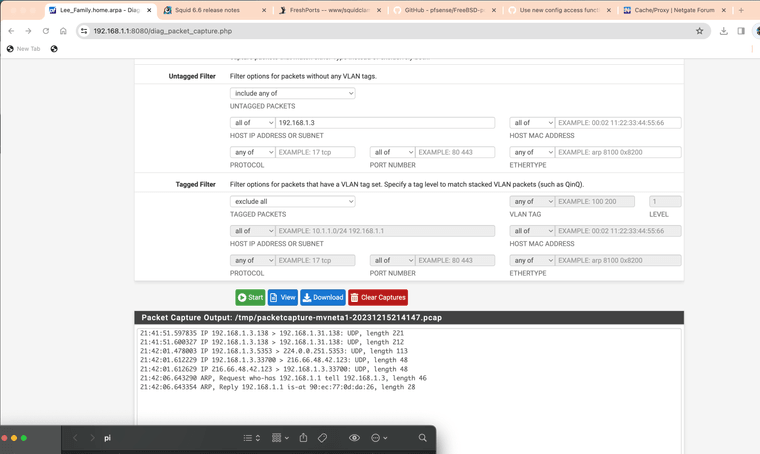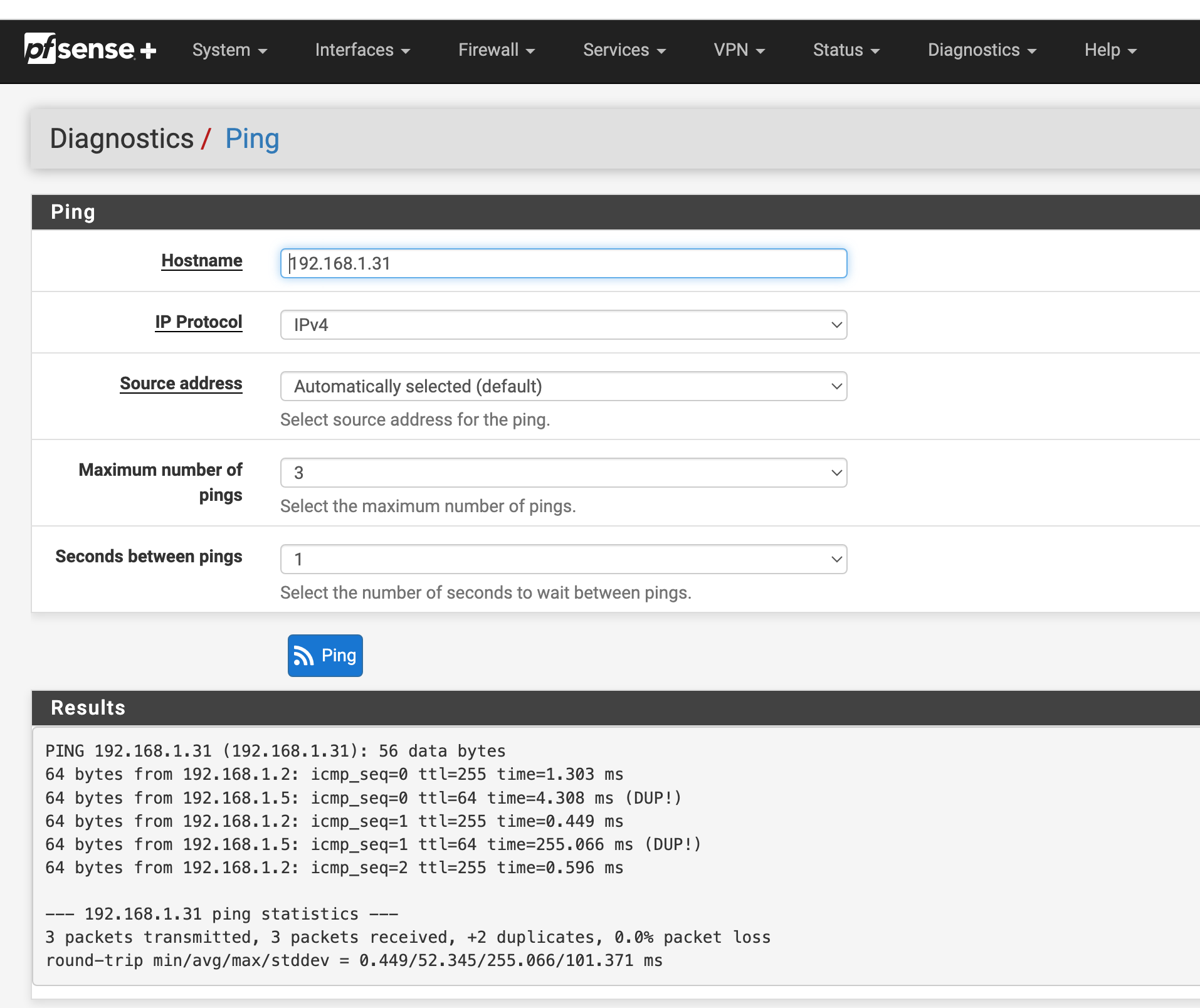I can't access my USB hard drive that is attached to my old TP-Link WiFi router
-
@Neoveo said in I can't access my USB hard drive that is attached to my old TP-Link WiFi router:
If I go to a browser and type in the IP address of my TP-Link router, I can connect no problem.
that is exactly what I told you do to, and exactly what that video said.. But then you said it was a different IP..
File shares are not on port 8200.. That is your minidlna running on tplink.. You just need to connect to the IP of the tplink via smb, which would be port 445.. You don't need to call that out, doing a run \ \ IPaddress will do it, or smb:\ \ IPaddress.
None of which has anything at all to do with pfsense.
No duh you wouldn't be able to run ipconfig on the tplink, its a not a windows server..
-
@johnpoz I did not select :8200, that is what Windows 10 automatically chooses and I have no option to edit or otherwise modify that.
I never said I ran ipconfig on the TP-Link wifi router; I ran it in Windows 10 Command Prompt, just like they showed in the video.
And yes, the IP address that I have to use in Windows 10 to connect to my USB SSD is different than the IP address that I use to connect to my TP-Link wifi router.
When I say connect to my TP-Link wifi router I mean access to it's OS, where I can change the settings like wifi password. Connecting to my TP-Link wifi router with it's IP address does not grant me access to the USB SSD; I can see that it's connected, but can't read or write to it.
In Linux, that is a different story, as I mentioned above, I can use sbb://IP-address-for-TP-Link and all is good.
In Windows 10 I have to use a different IP address (where the last three digits are different).Anyway, I am thankful that I am now able to access my USB SSD.
-
@Neoveo said in I can't access my USB hard drive that is attached to my old TP-Link WiFi router:
In Windows 10 I have to use a different IP address (where the last three digits are different).
Sorry but that makes no sense.. Lets say tplink had 2 ips - why would both of them not work.. Are you trying to connect to its old wan IP? Or its lan IP?
Why don't you show the IPs your connecting to.. They are rfc1918, they are useless to anyone out on the internet.
-
@Neoveo said in I can't access my USB hard drive that is attached to my old TP-Link WiFi router:
I ran it in Windows 10 Command Prompt, just like they showed in the video.
That was the machine with a file share.. And how to find the IP to connect to from another machine..
I am glad you have it sorted and can access your usb share..
-
I had an issue where none of my devices could see my wireless MFP. I had to create a DNS resolver host override entry for it and it fixed everything. I have one for my NAS and one for my MFP. I also run SMB on a raspberry pi but it's accessible on everything.

I don't know if your printer needs the same thing.
-
@JonathanLee which has nothing to do with accessing a smb share via the IP.
-
@johnpoz my Raspberry PI I run a Samba share, I never had to make any ACLs for it as it hits the bridge mode AP I guess and that resolves when items ARP out to it. I don't understand why my MFP needed a host override, no matter if it was turned on or not, it needed one to use it. My airport extreme has a USB drive that was slow until I added a host override for that also. Weird right?
https://pimylifeup.com/raspberry-pi-samba/
-
@JonathanLee the only reason you would need a host override is if you wanted to access via some fqdn.. You sure and the hell do not need that to access a smb share via IP.
If I go \ \ IPaddress or smb:\ \IPaddress (spaces because 2 \s together dont show up because it thinks it escape character most likely).
By mfp, you mean multifunction printer? What would that have to do with a smb share?
Why don't you do a sniff when you try and access your smb share via IP.. Do you see any queries for a name, do you see any broadcast for a name?
-
@johnpoz Yes printer, I thought maybe the samba device also needs a host override. I will check why my PI seems to never has issues, the printer uses a different host name so yep hence the need for fqdn host override.
I ran a packet sniffer while I looked at items I have stored in it and it shows samba port 138 being accessed by 192.168.1.31. This is what occurs when I access the share on the raspberry pi.
I use 192.168.1.1/27 so that is my broadcast address 192.168.1.31 so it is just using the broadcast address to access the samba internally and replying to it? It even uses the multicast DNS port 5353 to get stuff done.
Epic and totally amazing to think of a way to do that. seems risky. I do not approve any of that within the ACLs on the firewall.

pinging the broadcast address

-
@JonathanLee I print to my printer my IP, you can do both - but yeah if your going to use a fqdn, that fqdn has to resolve to an IP or your never going to get there.
-
@johnpoz it's the Cannon software it uses URLs to access the scanner and printer before it sends requests, I can watch it on the proxy, it had this weird hostname, I could input the IP address manually and access it over the browser that's when I thought it needs the hostname to resolve also. The devices use one name and the software uses another name. Hostname override fixed it, that's why I thought his printer or Samba was also using a hostname somewhere
-
@JonathanLee not sure what is not clicking here.. Yes if you use or some software uses a name be it a fqdn, or a host name or a mdns name or node name, etc it would have to resolve in some fashion, either some L2 discovery thing like mdns, or ssdp, etc. or just a simple old school LM host sort of broadcast for the name.
But it sure isn't required if your just going to use an IP to access the service.. Now if your using some cert or something for the services your accessing the IP would need to be in the SAN, or your browser prob going to balk at you because the cert not valid for how your accessing it. But smb doesn't use that.
I have no idea where he is coming with this statement of different IP.. I find it very hard to believe that this wifi router running a simple smb share is going to have more than 1 IP - one for the gui, or and one for the smb share.
He feels like he has to hide his rfc1918 address, and not showing where he is finding the IP for the device, and or what IP is showing in his discovery of the dlna server his computer is showing him with that 8200 port.. But that IP isn't going to be different than the IP used for the smb share.
He says he can access it now, this never had anything to do with pfsense in the first place - so I would consider this closed.
